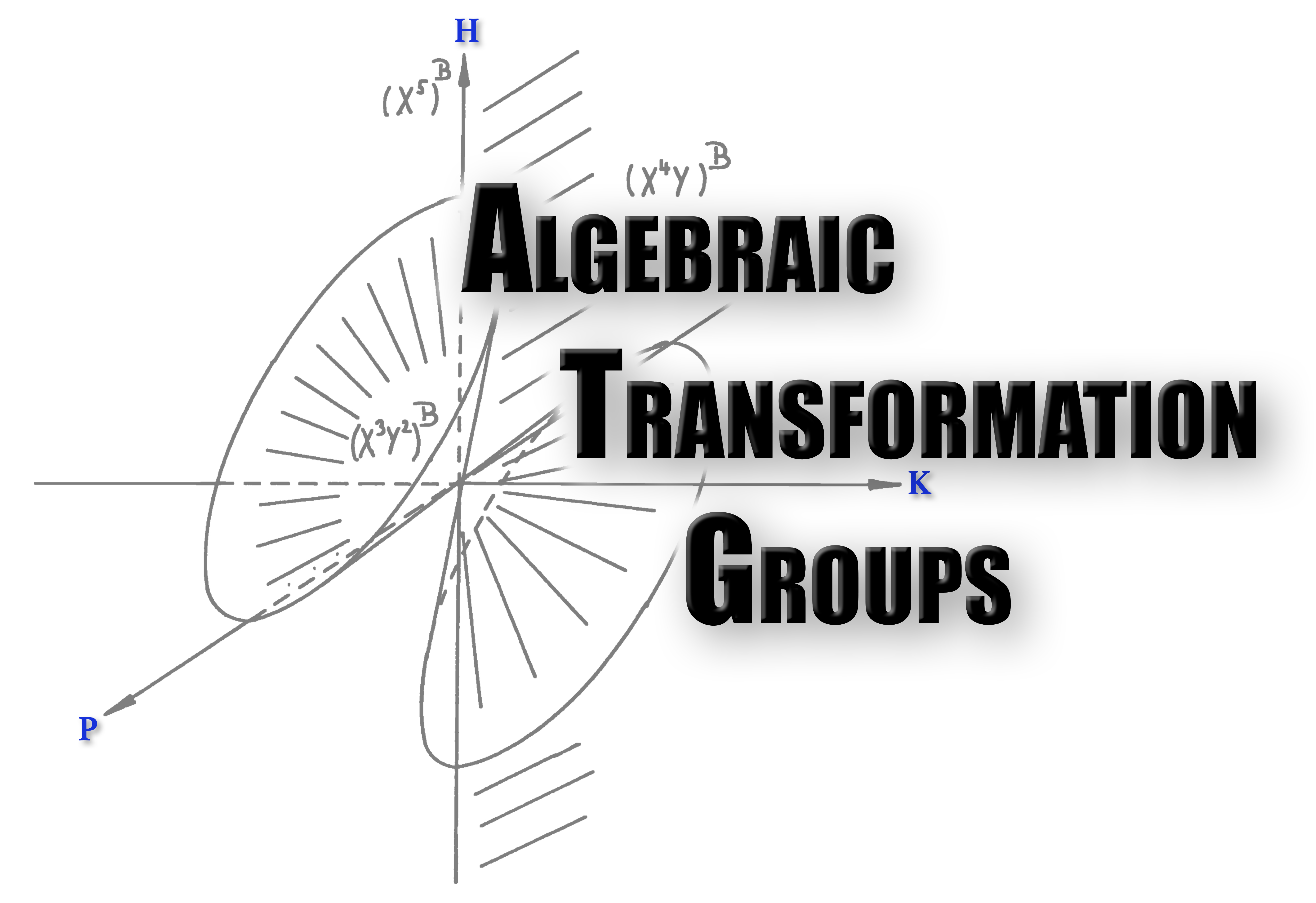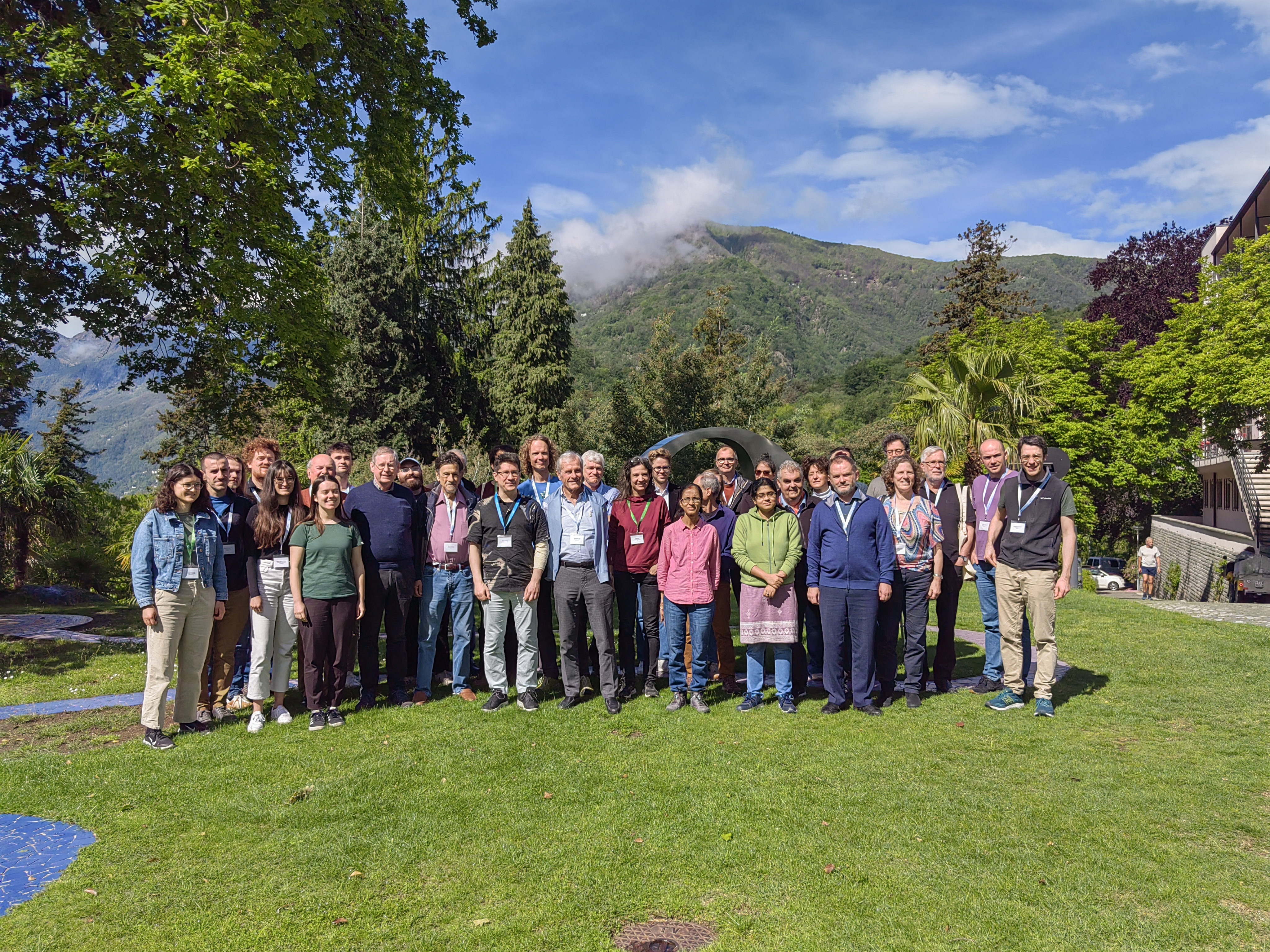
Workshop:
Algebraic Transformation Groups
May 5-8, 2024 - Monte Verità Ascona, Switzerland
The workshop is devoted to the most recent results centered around algebraic transformation groups. This will bring together people from affine and birational geometry, as well as representation theory and complex geometry. The workshop takes place in Monte Verità, a beautiful place in southern Switzerland. Here is some short movie about the Monte Verità.
Here you can find practical information for the venue. There will be a shuttle taxi from the train station in Locarno to Monte Verità on 5 May at 11:00, 11:40, 12:20, 13:00, 13:40, 14:20. For the journey back on 8 May, there will be again a taxi shuttle to Locarno. This will be organised during the workshop. The address of the hotel is:
Fondazione Monte Verità
Strada Collina 84
CH-6612 Ascona
Tel. +41 91 785 40 40
info@monteverita.org
The talks will take place in the Auditorium. More information can be found here .
Speakers:
- Ivan ARZHANTSEV - HSE University
- Karin BAUR - University of Leeds
- Anna BOT - Universität Basel
- Michel BRION - Université Grenoble Alpes
- Serge CANTAT - Université de Rennes
- Jean-Philippe FURTER - Université de Bordeaux
- Neena GUPTA - Indian Statistical Institute
- Friedrich KNOP - Universität Erlangen-Nürnberg
- Frank KUTZSCHEBAUCH - Universität Bern
- Stéphane LAMY - Université de Toulouse
- Peter LITTELMANN - Universität zu Köln
- Lucy MOSER-JAUSLIN - Université de Bourgogne
- Gerry SCHWARZ - Brandeis University
- Susanna ZIMMERMANN - Université Paris-Saclay
Schedule:

Participants:
- Marc Abboud - Université de Neuchâtel
- Rafael Andrist - University of Ljubljana
- Ivan Arzhantsev - HSE University
- Karin Baur - Ruhr-Universität Bochum
- Cinzia Bisi - Università degli Studi di Ferrara
- Jérémy Blanc - Université de Neuchâtel
- Anna Bot - Universität Basel
- Michel Brion - Université Grenoble Alpes
- Serge Cantat - Université de Rennes
- Michael Chitayat - Université d'Ottawa
- Daniel Daigle - Université d'Ottawa
- Corrado de Concini - Università di Roma
- Jan Draisma - Universität Bern
- Andrea Fanelli - Université de Bordeaux
- Gene Freudenburg - Western Michigan University
- Jean-Philippe Furter - Université de Bordeaux
- Parnashree Ghosh - Indian Statistical Institute
- Neena Gupta - Indian Statistical Institute
- Alicia Jaquet-Chiffelle - Université de Neuchâtel
- Friedrich Knop - Universität Erlangen-Nürnberg
- Hanspeter Kraft - Universität Basel
- Frank Kutzschebauch - Universität Bern
- Stéphane Lamy - Université de Toulouse
- Peter Littelmann - Universität zu Köln
- Lucy Moser-Jauslin - Université de Bourgogne
- Antoine Pinardin - University of Edinburgh
- Claudio Procesi - Università di Roma
- Andriy Regeta - Universität Jena
- Anne Schnattinger - Université de Neuchâtel
- Julia Schneider - Universität Zürich
- Gerry Schwarz - Brandeis University
- Christian Urech - ETH Zürich
- Alain Valette - Université de Neuchâtel
- Immanuel van Santen - Universität Basel
- Henrik Wehrheim - Université de Neuchâtel
- Egor Yasinsky - Université de Bordeaux
- Susanna Zimmermann - Université Paris-Saclay
Titles and abstracts of the talks:
Ivan Arzhantsev Flexible varieties, images of affine spaces, and ellipticity after Mikhail Gromov
We define flexible affine algebraic varieties, describe their basic properties, and show that many varieties satisfy the flexibility condition. The group of special automorphisms acts in the regular locus of a flexible variety infinitely transitively, that is, any finite collection of smooth points can be sent to any finite collection of smooth points of the same cardinality. Using flexibility, we show that every non-degenerate toric variety, every homogeneous space of a semisimple group, and every variety covered by affine spaces admits a surjective morphism from an affine space. Applying the ellipticity property introduced by Mikhail Gromov in 1989, we prove that a complete algebraic variety X is an image of an affine space if and only if X is unirational. This result is obtained in a joint work with Shulim Kaliman and Mikhail Zaidenberg.
Karin Baur Cluster structures via surface combinatorics
Surface combinatorics have been instrumental in describing algebraic structures such as cluster algebras and cluster categories, gentle algebras, etc. In this talk, I will show how this yields combinatorial approaches to cluster structures on the coordinate ring of the Grassmannians. I will also point out a link to root systems associated to the Grassmannian cluster categories.
Anna Bot Embeddings of 𝔸2 in 𝔸3 of degree 4 and wild automorphisms
The famous Nagata automorphism is the first example of a wild automorphism of 𝔸3. Wild automorphisms of 𝔸n are the ones that cannot be generated by affine and triangular automorphisms. As the Nagata automorphism is of degree 5, one can wonder whether there exists a wild automorphism of smaller degree. Blanc and van Santen proved that all automorphisms of degree ≤ 3 are tame. Starting from this, I will discuss work in progress on the situation in degree 4 using embeddings of 𝔸2 in 𝔸3 of degree 4.
Michel Brion Equivariant normalization
Let A be a finitely generated domain over a field of characteristic p. If A is graded by an abelian group M, then the integral closure of A is also M-graded when M is p-torsion free. But this fails when M has p-torsion, for example when M = Z/pZ and A = k[x,y]/(yp - f(x)), where x has degree 0, y has degree 1 and f is a "general" polynomial. More generally, an action of a finite group scheme on a variety need not lift to an action on the normalization. The talk will discuss a notion of equivariant normalization that remedies this problem, and present applications to smooth affine surfaces with an action of the multiplicative group and smooth projective surfaces with an action of an elliptic curve.
Serge Cantat Automorphisms of affine surfaces and p-adic dynamics
I will describe a general result concerning closures of orbits of groups acting on affine varieties over p-adic fields, and then apply it in the case of surfaces. This is joint work with Seung uk Jang.
Jean-Philippe Furter Families of Cremona transformations
A family of Cremona transformations is a « morphism » from an algebraic variety to the Cremona group. Such « morphisms » have been defined by Demazure and Serre. In this talk, we will give a few examples of families of Cremona transformations and we will also give some general properties of them (for example related with the length, the dynamical degree, the homaloidal type).
Neena Gupta The Abhyankar-Sathaye Epimorphism Conjecture
Friedrich Knop Multiplicities and dimensions in enveloping tensor categories
To every finitely powered regular category one can attach a family of symmetric tensor category, generalizing the calculus of relations. Under certain conditions these categories are semisimple, hence abelian. In the talk we explain how to compute the dimension of the simple objects and how to decompose the tensor product of simple objects.
Frank Kutzschebauch Factorization of holomorphic matrices
Every complex symplectic matrix in Sp2n(ℂ) can be factorized as a product of the following types of unipotent matrices (in interchanging order).
- (i): , upper triangular with symmetric B = BT.
- (ii): , lower triangular with symmetric C = CT.
The optimal number T(ℂ) of such factors that any matrix in Sp2n(ℂ) can be factored into a product of T factors has recently been established to be 5 by Jin, P. Lin, Z. and Xiao, B.
If the matrices depend continuously or holomorphically on a parameter, equivalently their entries are continuous functions on a topological space or holomorphic functions on a Stein space X, it is by no means clear that such a factorization by continuous/holomorphic unipotent matrices exists. A necessary condition for the existence is the map X → Sp2n(ℂ) to be null-homotopic. This problem of existence of a factorization is known as the symplectic Vaserstein problem or Gromov-Vaserstein problem. In this talk we report on the results of the speaker and his collaborators B. Ivarsson, E. Low and of his Ph.D. student J. Schott on the complete solution of this problem, establishing uniform bounds T(d, n) for the number of factors depending on the dimension of the space d and the size n of the matrices.
It seems difficult to establish the optimal bounds. However we obtain results for the numbers T(1, n), T(2, n) for all sizes of matrices in joint work with our Ph.D. students G. Huang and J. Schott and B.Tran.
Finally we give an application to the problem of writing holomorphic symplectic matrices as product of exponentials.
Stéphane Lamy Tame polynomial automorphisms acting on spaces with nonpositive curvature
The group Tame(𝔸n) of tame automorphisms is the subgroup of polynomial automorphisms of the affine space generated by linear automorphisms and elementary automorphisms (these being the ones affecting only one variable). Focusing on the case of three variables, I will explain the contructions of two spaces with negative curvature on which Tame(𝔸3) acts. This allows to obtain some results about this group such as: existence of many normal subgroups, linearizability of finite subgroups, and the Tits alternative. (Based on 3 papers in collaboration with Piotr Przytycki).
Peter Littelmann On Seshadri stratifications
Lucy Moser-Jauslin Real forms of almost homogeneous G-varieties
In this talk, we will discuss the classification of real forms of almost homogeneous complex varieties under the action of a reductive group. We start with the case of homogeneous forms, and then, using the combinatorial Luna-Vust theory, show how one can deduce results for the almost homogeneous case. By studying the real points of these varieties, for some cases, we can deduce results about the rationality of the associated real forms. We will also look into generalizations for other perfect fields. This work is in collaboration with R. Terpereau and L. Moulin.
Gerry Schwarz When does the zero fiber of a moment map have rational singularities?
Let G be a complex reductive group with Lie algebra 𝔤 and let V be a G-module. There is a natural moment mapping μ: V ⊕ V *→ 𝔤* and we denote μ-1(0) by N. We find criteria on V for N to have rational singularities. These criteria fail only if V is "small." In the important special case V = p𝔤 (the direct sum of p copies of 𝔤), N has rational singularities if p ≥ 2. This fact has many consequences. For example, it determines bounds on the growth of the dimensions of irreducible representations of arithmetic subgroups of G. This is joint work with H.-C. Herbig and C. Seaton.
Susanna Zimmermann Connected algebraic groups acting birationnally on the real plane
Any connected algebraic group acting faithfully by birational transformations on a projective space is a linear group. But who are they? They have been classified up to conjugation by birational maps when they act on the plane or the complex space. In this talk I will explain part of the classification of the ones acting on the real plane. This is work in progress with Ronan Terpereau.
Group picture:

Presentations:
Ivan Arzhantsev
Flexible varieties, images of affine spaces, and ellipticity after Mikhail Gromov
Neena Gupta
The Abhyankar-Sathaye Epimorphism Conjecture
Frank Kutzschebauch
Factorization of holomorphic matrices
Peter Littelmann
On Seshadri stratifications
Gerry Schwarz
When does the zero fiber of a moment map have rational singularities?
Posters:
Marc Abboud
Rigidity of Periodic Points for Loxodromic Automorphisms of Affine Surfaces
Michael Chitayat and Adrien Dubouloz
The Rigid Pham-Brieskorn Threefolds
Daniel Daigle and Gene Freudenburg
Automorphisms of the Ring of Invariants of the Binary Quintic Representation of SL2
Parnashree Ghosh
On the Epimorphism Problem for linear hyperplanes
Anne Lonjou, Piotr Przytycki and Christian Urech
Finitely generated subgroups of algebraic elements of Cremona groups are bounded
Organizers: Jérémy Blanc, Andriy Regeta and Immanuel van Santen